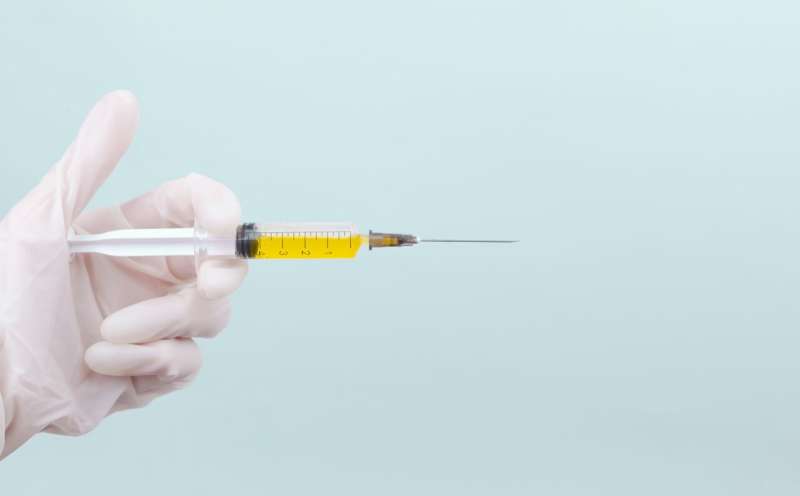This article has been reviewed according to Science X's editorial process and policies. Editors have highlighted the following attributes while ensuring the content's credibility:
fact-checked
peer-reviewed publication
trusted source
proofread
Researchers use AI to identify potential gonorrhea vaccine proteins

Gonorrhea, a sexually transmitted bacterial infection that affects more than 80 million people worldwide every year, has become resistant to almost all known antibiotics. That makes it notoriously difficult to treat, but left untreated, an infection could lead to serious or even fatal complications. It also increases a person's risk of contracting HIV.
A new study suggests artificial intelligence (AI) may help identify a vaccine's key ingredients. In mBio, an international collaboration between academic and commercial researchers reported the identification of two promising antigens as candidates for a gonorrhea vaccine. The researchers used an AI model called Efficacy Discriminative Educated Network, or EDEN, to identify the protective proteins.
They also used EDEN to generate scores that accurately predicted how well antigen combinations would reduce pathogenic bacterial populations of Neisseria gonorrhoeae, the microbe that causes gonorrhea.
"To the best of our knowledge, this correlation has not been shown before," said infectious disease researcher Sanjay Ram, M.D., at the University of Massachusetts Chan Medical School, in Worcester. Ram, Sunita Gulati, D.Sc, and their colleagues tested the antigens identified by EDEN in lab and animal models.
The work began in 2008 when Andreas Holm Mattsson, in Denmark, mined published literature to assemble a large dataset of protective surface proteins from a variety of pathogenic bacteria. That same year, Mattsson founded Evaxion, an AI immunology startup, and wanted to design an AI-based system that could identify vaccine targets in infectious microbes.
For the new study, Mattsson and his colleagues applied this new AI model to the proteomes of 10 clinically-relevant strains of Neisseria gonorrhoeae to predict a set of bacterial proteins that, in a vaccine, could help teach the body's immune system to recognize and fend off the bacteria.
"EDEN uses a feature like face recognition to understand the difference among proteins," said Mattsson.
Once they'd compiled the list, they sent it to Ram and Gulati in Massachusetts. "We tested and validated all of their candidates in mouse models," Ram said. The group first tested combinations of two or three antigens in mice. That analysis identified two proteins involved in cell division as promising candidates, neither of which were previously known to be exposed on the surface of the cell.
In lab experiments, blood samples taken from mice immunized with these two proteins killed bacteria from multiple strains of gonorrhea in vitro. Those findings lined up with EDEN's predictions. In additional experiments, immunized mice were infected with N. gonorrhoeae, and the vaccine decreased the bacterial burden.
"That really was a surprise," Ram said. "Nobody would have predicted that these two proteins that were believed not to be surface exposed would work in vaccines, and other researchers reacted with skepticism."
Given the efficacy of the individual tests, the Evaxion team then combined the proteins into a single chimeric protein, which induced an immune response that similarly showed efficacy in lab and animal models.
Ram noted that the investigation also revealed a mechanism critical to clearance of N. gonorrhoeae infection by this vaccine candidate. Whether such mechanisms of bacterial clearance occur in humans remains to be studied.
The researchers are now using EDEN to look for vaccine candidate proteins in other pathogenic microbes, including several bacteria for which EDEN has predicted high efficacy in mouse models.
They're also thinking about how to move beyond the promise of preclinical work and see if the same proteins are protective in the human body. They recently partnered with a South African biotechnology company to develop an experimental mRNA vaccine based on the antigens.
More information: mBio (2023). journals.asm.org/doi/10.1128/mbio.02500-23




















